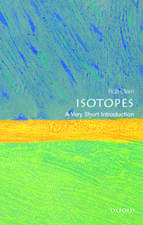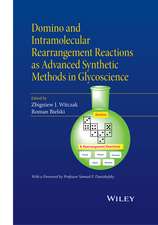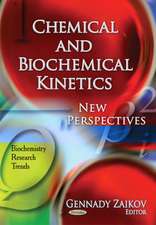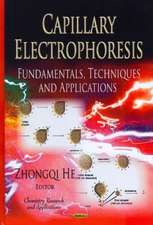Handbook of Condensed Phase Chemistry
Editat de G. E. Zaikov, V. K. Kabloven Limba Engleză Hardback – 9 mar 2011
Preț: 1715.08 lei
Preț vechi: 2351.39 lei
-27% Nou
Puncte Express: 2573
Preț estimativ în valută:
328.28€ • 356.71$ • 275.94£
328.28€ • 356.71$ • 275.94£
Carte disponibilă
Livrare economică 31 martie-14 aprilie
Preluare comenzi: 021 569.72.76
Specificații
ISBN-13: 9781607417347
ISBN-10: 1607417340
Pagini: 341
Ilustrații: illus., tables, graphs & diagrams
Dimensiuni: 184 x 258 x 24 mm
Greutate: 0.83 kg
Ediția:New.
Editura: Nova Science Publishers Inc
Locul publicării:United States
ISBN-10: 1607417340
Pagini: 341
Ilustrații: illus., tables, graphs & diagrams
Dimensiuni: 184 x 258 x 24 mm
Greutate: 0.83 kg
Ediția:New.
Editura: Nova Science Publishers Inc
Locul publicării:United States
Cuprins
Preface; Effects of metals and their oxides on the tribological characteristics of the composites based on fluorine plast; Polymers as natural nanocomposites: the comparative analysis of reinforcement mechanisms; Polymers as natural nanocomposites: the geometry of intercomponent interactions; Polymers as natural nanocomposites: the reinforcement structural model; Polymers as natural nanocomposites: the structural analysis of thermophysical properties; Polymers as natural nanocomposites: the Leidner-Woodhams model application; Polymers as natural nanocomposites: the stress concentration and strength; The characteristics of EPR spectra as indicator of a molecular mobility level in polymers; Polymers as natural nanocomposites: elasticity modulus and polymer chains tightness; Polyurethanes in biological media; Mobile structural defects as catalyst of solid state polymerization; Nanotechnological fundamentals of temperature-controlled polymer coatings; Macrokinetic mechanism of biodegradation of polymer samples based on cross-linked dextrans; Synthesis and study of phenol-formaldehyde type polymers on the base of bisphenol with adamantine grouping; On a possibility of use of embolizing preparation derived from poly(2-hydroxyethyl methacrylate) (poly-HEMA) for chemoemobolization; Modern basalt fibrous materials and basalt fiber based polymeric composites; Quantum-chemical calculation of heterocyclic basic nitrogens "Alphabet" of genetic code by method AB INITIO; Macromolecular effects at chitosan enzymatic destruction in solution; Enzymatic destruction of chitosan; Some Important Parameters for Control of Proteolytic Reaction on Wool; Halogen-contaiting poly(arylene ether ketone)s; The influence of polyazomethines on basic of 4,4/-diaminotriphenylmethane on physicomechanical properties of polybutyleneterephthalate; Polyazomethine-esters based on a new aromatic dialdehydes; Oligosulfons on the basis of 1,1-dichlor-2,2-di(4-oxyphenyl)ethylene and 4-4/dichlordiphenylsulfon obtained by high-temperature polycondensation; Behaviour of some solid oxides irradiated in different mediums and in presence of additions; Biomimetic oxidation of alkanes; Radical co-polymerization of guanidine containing acrylic monomer with N,N-diallyl-N,N-dimethylammonium chloride in water: kinetic peculiarities and co-polymers properties; NMR1H spectral characteristics of diallyl monomers derivatives; Investigation of structure peculiarities and behavior in different solvents of guanidine containing monomers with NMR spectroscopy method; Synthesis of new polyfunctional guanidine containing acrylic monomers and polymers; Determination of composition and structure of homo-polymers and co-polymers on the base of guanidine diallyl derivatives by NMR1H spectroscopy method; Structural peculiarities of amphiphylic co-polymers: poly-N,N-diallyl-N,N-dimethylammonium chloride-co-poly(meth)acrylate guanidines; The study of the biocide and toxicological characteristics of novel polyacrylamidic flocculants; Index.










